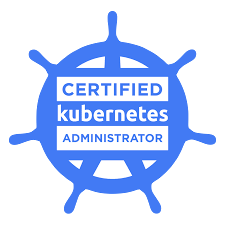Certified Kubernetes Administrator (CKA)

Overview
Instructor: Mumshad Mannambeth
Awesome content - really comprehensive overview of Kubernetes administration. Training labs are fantastic and provide the student with the skills needed to pass the exam.
| Type |
Duration |
Rating |
| Course |
18 hours |
5/5 |
Highly recommended.
Exam Outline
Section 1: Cluster Architecture, Installation Configuration - 25%
| Understanding |
| Manage role based access control |
| Use kubeadm to install a basic cluster |
| Manage a highly-available kubernetes cluster |
| Provision underlying infrastructure to deploy a kubernetes cluster |
| Perform a version upgrade on a kubernetes cluster using kubeadm |
| Implement etcd backup and restore |
Section 2: Services and Networking - 20%
| Understanding |
| Understand host networking configuration on the cluster nodes |
| Understand connectivity between pods |
| Understand ClusterIP, NodePort, LoadBalancer service types and endpoints |
| Know how to use ingress controllers and ingress resources |
| Know how to configure and use CoreDNS |
| Choose an appropriate container network interface plugin |
Section 3: Troubleshooting - 30%
| Understanding |
| Evaluate cluster and node logging |
| Understand how to monitor applications |
| Manage container stdout & stderr logs |
| Troubleshoot application failure |
| Troubleshooting cluster component failure |
| Troubleshoot networking |
Section 4: Workloads and Scheduling - 15%
| Understanding |
| Understanding deployments and how to perform rolling update and rollbacks |
| Use ConfigMaps and Secrets to configure applications |
| Know how to scale applications |
| Understand primitives used to create robust, self-healing application deployments |
| Understand how resource limits can affect Pod scheduling |
| Awareness of manifest management and common templating tools |
Section 5: Storage - 10%
| Understanding |
| Understand storage classes, persistent volumes |
| Understand volume mode, access modes and reclaim policies for volumes |
| Understand persistent volume claims primitive |
| Know how to configure applications with persistent storage |
